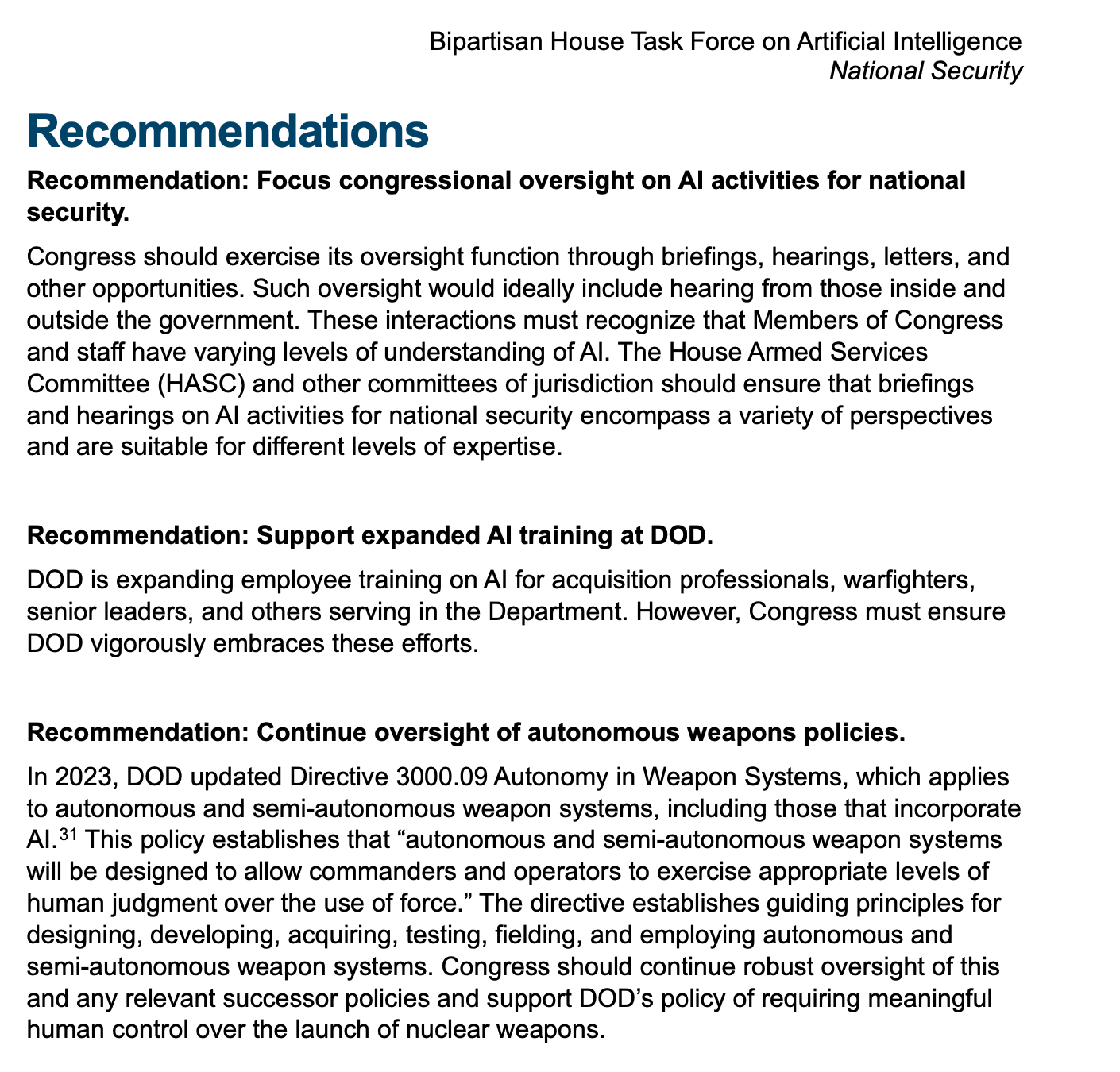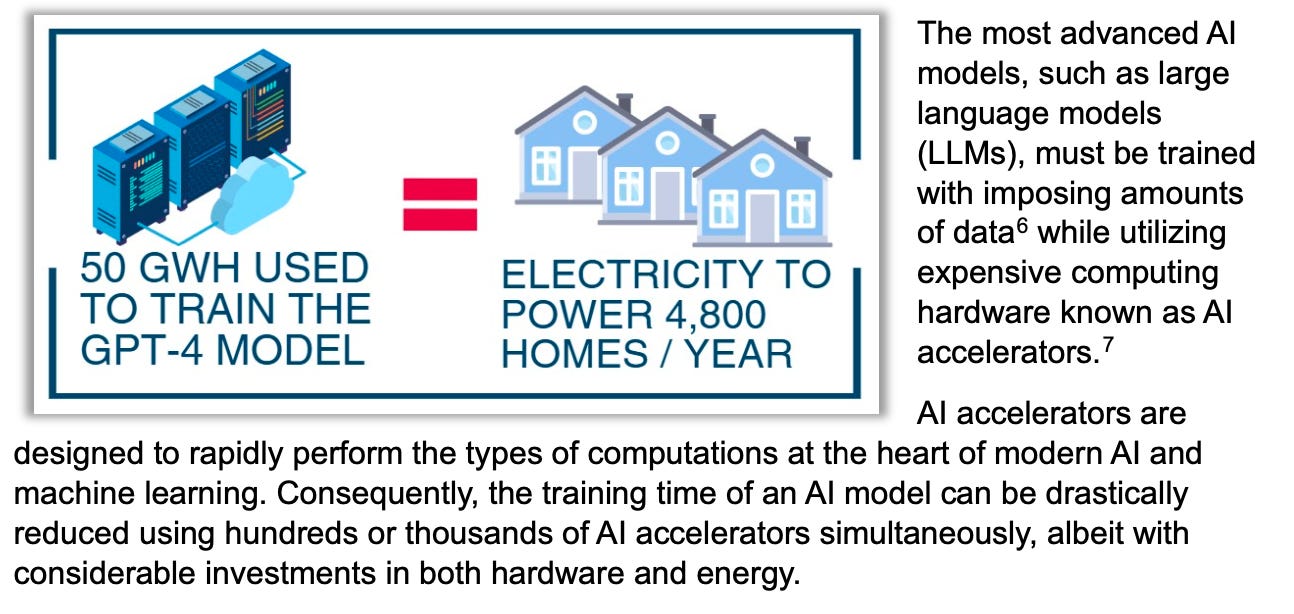This is part two of the Alliance for the Future analysis of the Bipartisan House Task Force Report on Artificial Intelligence. You can find part 1 here. Featuring fifteen categories, the 273 page report provides a roadmap for where AI policy will lead in the new year, particularly as Speaker Johnson will continue to lead the House in a Republican trifecta.
Under a Republican administration, proactive AI policy is likely to shift to national security, supply chain, and energy priorities. As the Trump administration shifts the tone of AI policy towards American production and efficiency, the House AI report indicates how those priorities might be implemented.
National Security
The national security section of the House report documents the thorough, bipartisan development and adoption of AI technologies in the Department of Defense (DOD). The entire history is too lengthy for this summary, but is worth reading for anyone interested in AI-related Defense issues.
Moreover, the report recommends iterating on existing oversight powers and training programs. In further sections, the House aims to bolster a patriotic vision which prioritizes American interests as a leading technological, economic, and geopolitical power.
Energy
The energy section is an exceptionally clear-eyed analysis of the coming sharp increases in electricity demand.
One important consideration for the broader economic impacts of rising electricity demand is uneven price elasticity. Short term fluctuations in electricity demand are ably handled by the current supply of natural gas. However, as demand sharply and permanently increases, longer-term solutions are become necessary. As the report documents:
The report correctly identifies the variable energy consumption of emerging AI hardware. Considering variability in supply, demand, and efficiency in setting future policy is another sign of the seriousness and effectiveness of the report.
Consequently, the report endorses further support for new energy construction and deregulation, both steps that are appropriate and effective for dealing with rising energy demand.








